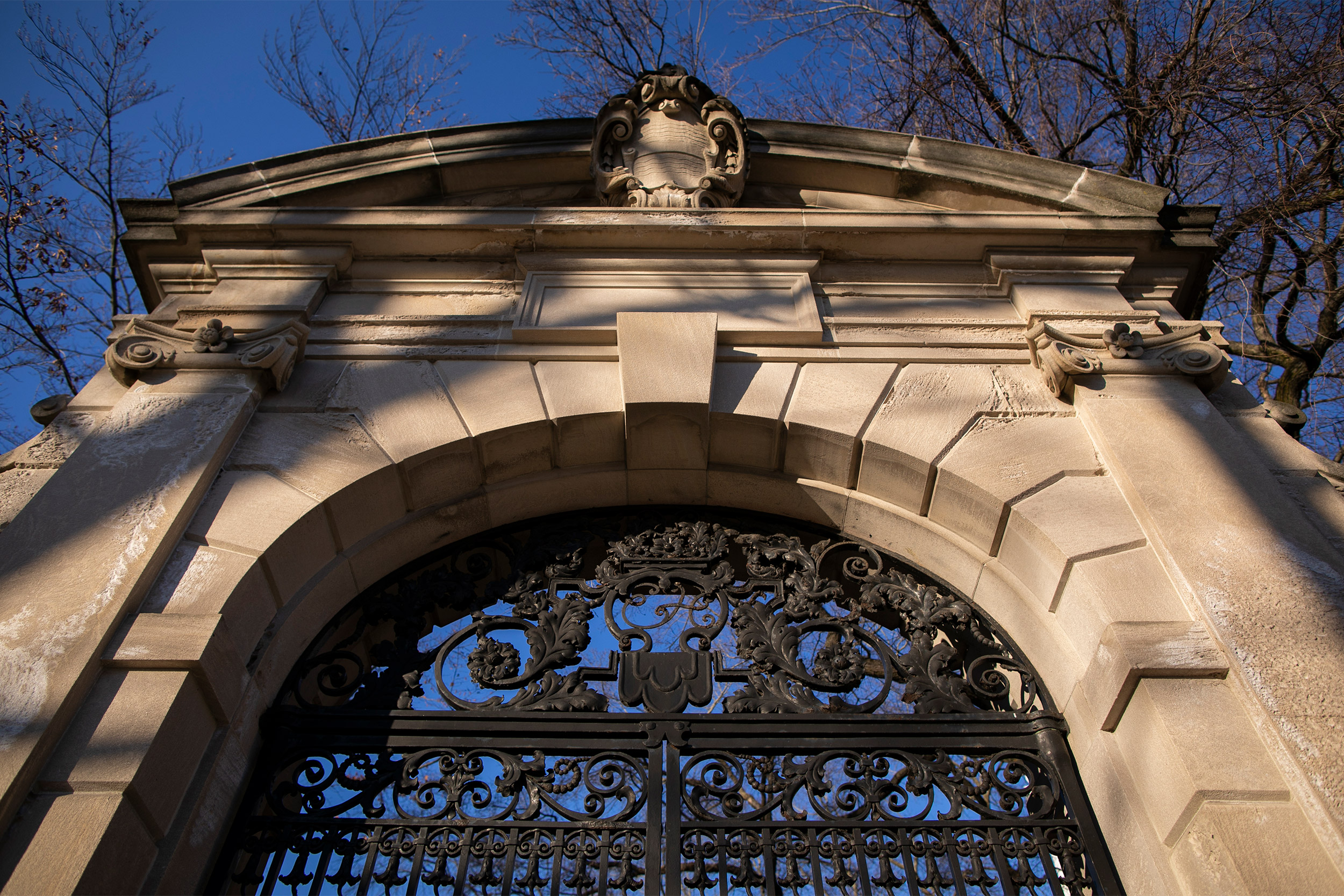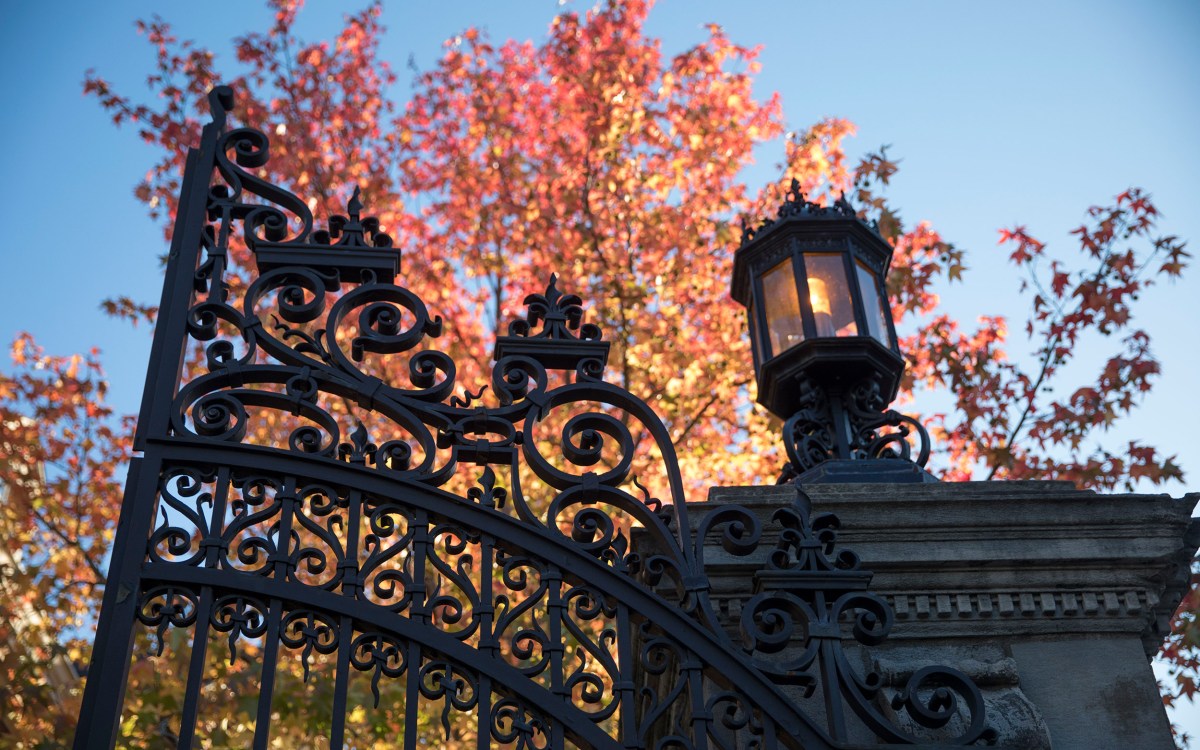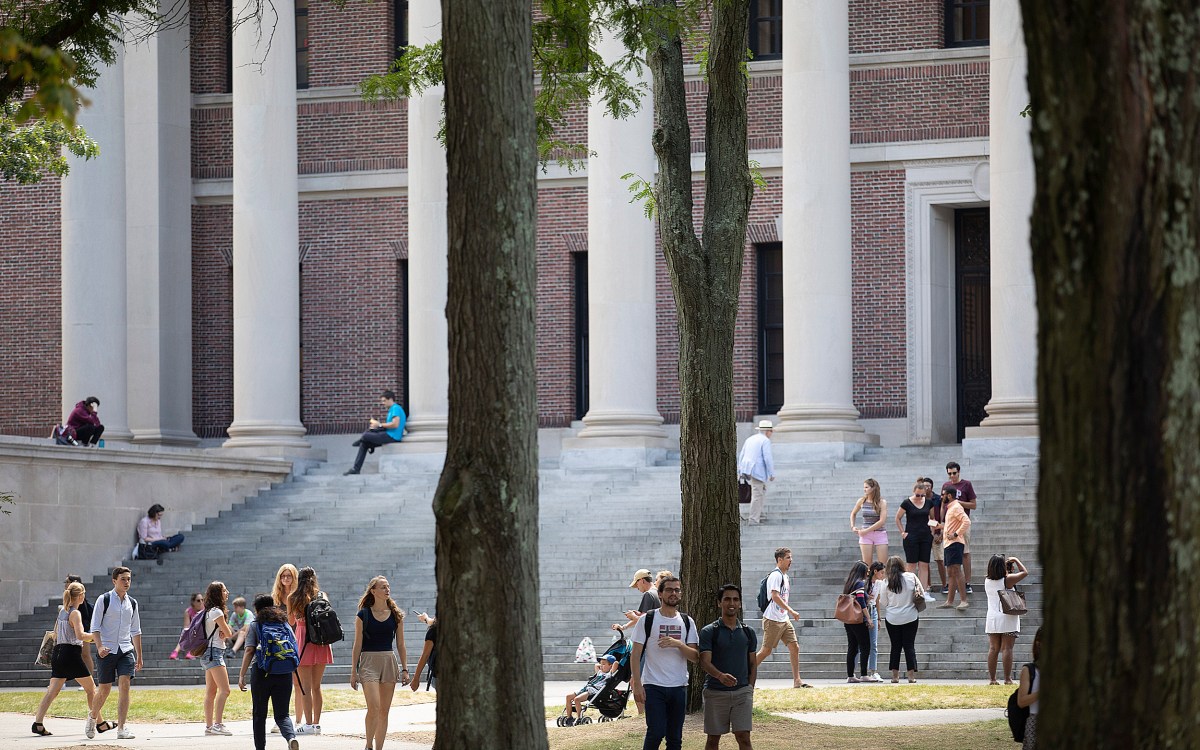
Nearly 83 percent of students admitted to Harvard’s Class of 2023 will attend.
Stephanie Mitchell/Harvard file photo
Strong yield for the Class of 2023
College’s Financial Aid Initiative continues to bolster interest
Nearly 83 percent of students admitted to the Class of 2023 have chosen to matriculate at Harvard College. The yield for the Class of 2022 was 81.7 percent. Because of the high yield, only a small number of students will be admitted from the waiting list over the coming weeks.
“Harvard is indebted to the many undergraduates, faculty, and alumni who have helped attract so many of the nation’s and world’s promising students,” said William R. Fitzsimmons, dean of admissions and financial aid. “That outreach and guidance provide the critical difference by informing prospective students of the robust opportunities that await them in Cambridge.”
Visitas, Harvard’s April visiting program, once again provided a warm welcome to newly admitted students. Faculty members, administrators, and current undergraduates conducted panel discussions and fielded questions from admitted students during Visitas, while alumni hosted numerous “admit parties” and telephoned admitted students in their local areas.
Students with the Undergraduate Admissions Council, Undergraduate Minority Recruitment Program, Harvard Financial Aid Initiative, Harvard First Generation Program, and Harvard College Connection also targeted their efforts this year by again calling and emailing their peers to answer questions and highlight specific opportunities for students: 130-plus freshman seminars; a robust advising system that provides more than 400 first-year advisers, 200 peer advising fellows, and 60 resident proctors; research opportunities with close faculty collaboration; the creation of 49 secondary fields; and a revised General Education program.
Financial aid was a crucial consideration for a large segment of those enrolling in the Class of 2023. “Harvard’s financial aid program has continued to open the doors to low- and middle-income students,” said Jake Kaufmann, Griffin Director of Financial Aid, noting that more than half of the entering class applied for financial aid; 20 percent qualified for the low-income portion of the Harvard Financial Aid Initiative; more than 23.3 percent requested application fee waivers; and 14.5 percent are first-generation college students.
Over the past year, Harvard spent $200 million on undergraduate financial aid. One in five Harvard families has an annual income of less than $65,000 and pays nothing toward the cost of the student’s education. Families with incomes up to $150,000 with typical assets pay 10 percent or less of their annual incomes, and many with higher incomes also qualify for assistance depending on individual circumstances. The families of Harvard students receiving need-based financial aid pay an average of only $12,000, and students are never required to take out loans to cover the cost of their education.
Harvard is committed to ensuring that all students take full advantage of their College experience. In addition to grant aid to cover the basic cost of attendance, Harvard provides more than $6 million annually in additional funding to students, supporting everything from winter coats to music lessons to studying abroad to public service internships to laboratory research experiences. Harvard’s neediest students also receive a $2,000 “start up” grant to help ease their transition to the College and allow them to explore the vast opportunities available to them year-round.
At this time, women and men each comprise about 50 percent of the class. Prospective social science concentrators constitute 26.1 percent; 19 percent are interested in the biological sciences, 16 percent in the humanities, 10.5 percent in engineering, 7.6 percent in computer science, 7 percent in the physical sciences, 6.8 percent in mathematics, and 7.1 percent are undecided. Asian Americans make up 25.6 percent of the class, African Americans 13.1, Latinx 11.8 percent, and Native Americans and Native Hawaiians 2.2 percent. International students constitute 13.1 percent of the class. Geographical origins of the Class of 2023 are similar to last year’s class.
Six veterans and 28 students who expressed an interest in ROTC are among the members of the Class of 2023. In recent years, Harvard has increased efforts to recruit individuals who have served in the U.S. military, working with the Defense Department, joining Service to School’s Vetlink program in 2017, and conducting outreach via community college centers for veterans.
“Recruiting for next year’s Class of 2024 is already underway,” said Marlyn McGrath, director of admissions. “We have communicated with thousands of prospective students through electronic and social media, and our outreach efforts are more multifaceted than ever before. Recruitment ‘season’ truly never ceases.”
Staff will visit 70 locations in the United States this month and another 80 during the fall in addition to doing some international travel. Thousands of prospective students and their families have already visited Cambridge over the past few months, attending group information sessions and tours.






